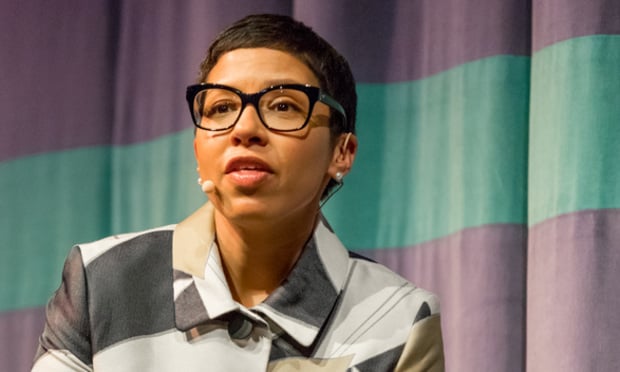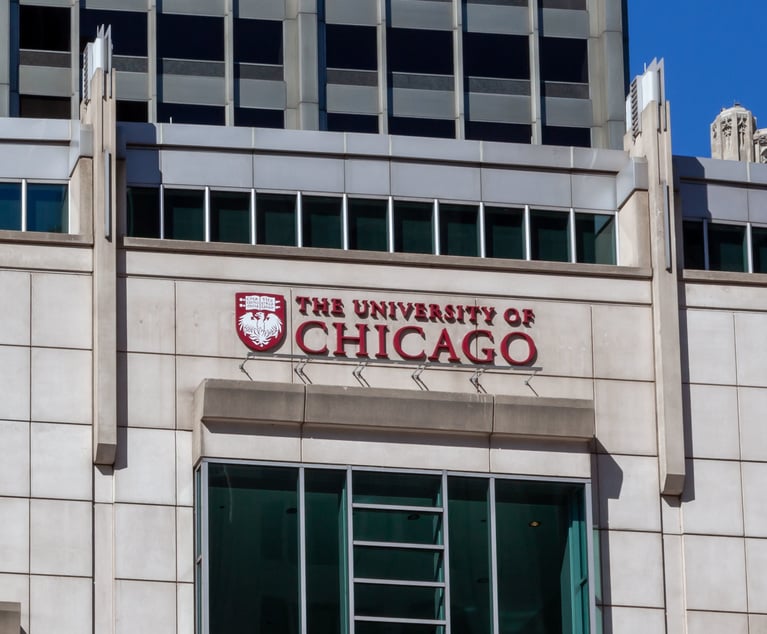Women Hold Editor-in-Chief Positions at the 16 Most Elite Law Reviews
The work that law schools and law journals have done in recent years to foster more diverse memberships is paying off with women taking the top editorial post of the flagship law journals at the highest-ranked schools in the country.
January 21, 2020 at 03:52 PM
4 minute read
 Melissa Murray. (Photo: Jason Doiy/ALM.)
Melissa Murray. (Photo: Jason Doiy/ALM.)
It's a major moment for women at top law journals.
For the first time ever, female law students sit atop of the mastheads of the flagship law reviews at each of the top 16 law schools in the country, as ranked by U.S. News & World Report.
That's a significant shift from 2012, when a study by the nonprofit group Ms. JD found that women comprised just 29% of top editors at the flagship journals housed at the top 50 law schools. Women made up 43% of all law review editors in 2012 and 45% of all law review members.
Editor-in-chief posts are the most competitive to get and one of the most prestigious credentials law students can put on their resume. Executive board positions, including editor-in-chief, are typically determined through elections among the law review membership, meaning editors are selected by their peers. The sweep of editor-in-chief spots by women among the T-14 law schools has people talking.
"It speaks well to the progress that many law schools have made toward cultivating a more hospitable environment for women, people of color, and first-generation law students," said Melissa Murray, a professor at New York University School of Law. "But credit should not go to law schools alone. The law reviews deserve credit as well."
Murray noted that many law journals have taken a hard look at whether they are fostering environments that include traditionally underrepresented students and encourage them to take on leadership roles.
The flagship law reviews with women now at the helm include those at Yale, Stanford, and Harvard, and extend down the law school rankings to the University of Texas, at No. 16.
The advancement of women in law review leadership positions has been a growing focus since the 2012 study spotlighted the dearth of women in editor-in-chief roles. The Cornell Law Review made headlines last year when it elected an all-female executive board, believed to be the first in history for a flagship journal at a top law school. That's just one example of how women are moving toward parity with men in the legal profession, Cornell Law Review Editor-in-Chief Lauren Kloss said in a 2019 interview, after she was elected.
"I think we are seeing women professors advance in legal academia," Kloss said. "We see which firms are announcing all-female partner classes. I think we feel that we are a part of that movement. That women are a strong force in the legal field and will continue to prove themselves."
The proliferation of women leading law reviews will be the subject of a panel discussion at a daylong conference honoring the advancement of women in the legal profession hosted by Duke Law School on Feb. 3 in Washington. The conference will also include panels featuring women practitioners; law deans; and judges. The session of jurists features U.S. Supreme Court Justice Ruth Bader Ginsburg; Judge Pam Harris of the U.S. Court of Appeals for the Fourth Circuit; Judge Nina Pillard of the U.S. Court of Appeals for the District of Columbia; and Judge Sri Srinivasan, also of the D.C. Circuit.
The sweep of women editor-in-chief at top law schools won't extend into the 2020-21 academic year, however. Many law reviews have yet to hold executive board elections, but the Yale Law Journal has already selected a male student—Alexander Nabavi-Noori—as its next editor-in-chief.
This content has been archived. It is available through our partners, LexisNexis® and Bloomberg Law.
To view this content, please continue to their sites.
Not a Lexis Subscriber?
Subscribe Now
Not a Bloomberg Law Subscriber?
Subscribe Now
NOT FOR REPRINT
© 2025 ALM Global, LLC, All Rights Reserved. Request academic re-use from www.copyright.com. All other uses, submit a request to [email protected]. For more information visit Asset & Logo Licensing.
You Might Like
View All
The Week in Data Jan. 24: A Look at Legal Industry Trends by the Numbers


University of Chicago Accused of Evicting Student for Attending Gaza-Israel Protest
3 minute read
Sanctioned Penn Law Professor Amy Wax Sues University, Alleging Discrimination
5 minute readTrending Stories
- 1We the People?
- 2New York-Based Skadden Team Joins White & Case Group in Mexico City for Citigroup Demerger
- 3No Two Wildfires Alike: Lawyers Take Different Legal Strategies in California
- 4Poop-Themed Dog Toy OK as Parody, but Still Tarnished Jack Daniel’s Brand, Court Says
- 5Meet the New President of NY's Association of Trial Court Jurists
Who Got The Work
J. Brugh Lower of Gibbons has entered an appearance for industrial equipment supplier Devco Corporation in a pending trademark infringement lawsuit. The suit, accusing the defendant of selling knock-off Graco products, was filed Dec. 18 in New Jersey District Court by Rivkin Radler on behalf of Graco Inc. and Graco Minnesota. The case, assigned to U.S. District Judge Zahid N. Quraishi, is 3:24-cv-11294, Graco Inc. et al v. Devco Corporation.
Who Got The Work
Rebecca Maller-Stein and Kent A. Yalowitz of Arnold & Porter Kaye Scholer have entered their appearances for Hanaco Venture Capital and its executives, Lior Prosor and David Frankel, in a pending securities lawsuit. The action, filed on Dec. 24 in New York Southern District Court by Zell, Aron & Co. on behalf of Goldeneye Advisors, accuses the defendants of negligently and fraudulently managing the plaintiff's $1 million investment. The case, assigned to U.S. District Judge Vernon S. Broderick, is 1:24-cv-09918, Goldeneye Advisors, LLC v. Hanaco Venture Capital, Ltd. et al.
Who Got The Work
Attorneys from A&O Shearman has stepped in as defense counsel for Toronto-Dominion Bank and other defendants in a pending securities class action. The suit, filed Dec. 11 in New York Southern District Court by Bleichmar Fonti & Auld, accuses the defendants of concealing the bank's 'pervasive' deficiencies in regards to its compliance with the Bank Secrecy Act and the quality of its anti-money laundering controls. The case, assigned to U.S. District Judge Arun Subramanian, is 1:24-cv-09445, Gonzalez v. The Toronto-Dominion Bank et al.
Who Got The Work
Crown Castle International, a Pennsylvania company providing shared communications infrastructure, has turned to Luke D. Wolf of Gordon Rees Scully Mansukhani to fend off a pending breach-of-contract lawsuit. The court action, filed Nov. 25 in Michigan Eastern District Court by Hooper Hathaway PC on behalf of The Town Residences LLC, accuses Crown Castle of failing to transfer approximately $30,000 in utility payments from T-Mobile in breach of a roof-top lease and assignment agreement. The case, assigned to U.S. District Judge Susan K. Declercq, is 2:24-cv-13131, The Town Residences LLC v. T-Mobile US, Inc. et al.
Who Got The Work
Wilfred P. Coronato and Daniel M. Schwartz of McCarter & English have stepped in as defense counsel to Electrolux Home Products Inc. in a pending product liability lawsuit. The court action, filed Nov. 26 in New York Eastern District Court by Poulos Lopiccolo PC and Nagel Rice LLP on behalf of David Stern, alleges that the defendant's refrigerators’ drawers and shelving repeatedly break and fall apart within months after purchase. The case, assigned to U.S. District Judge Joan M. Azrack, is 2:24-cv-08204, Stern v. Electrolux Home Products, Inc.
Featured Firms
Law Offices of Gary Martin Hays & Associates, P.C.
(470) 294-1674
Law Offices of Mark E. Salomone
(857) 444-6468
Smith & Hassler
(713) 739-1250








